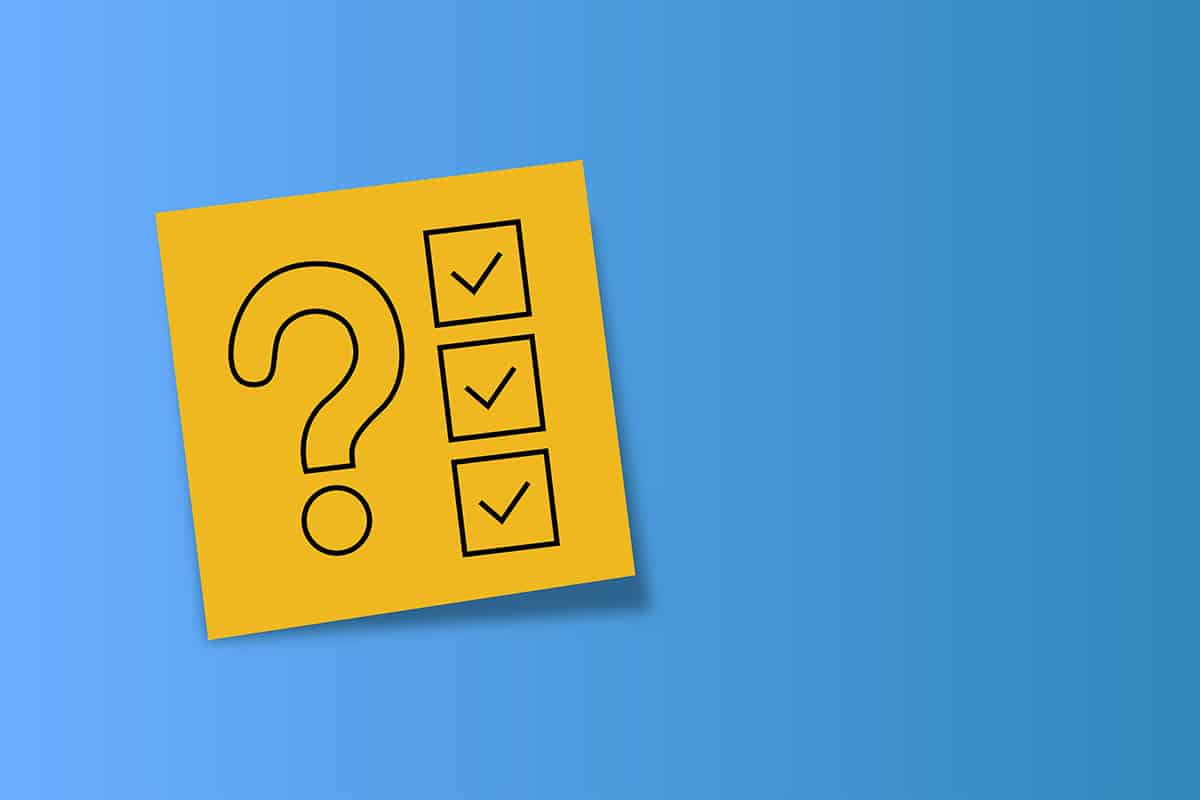Online surveys are an excellent way to get valuable feedback from your customers or employees. With the right survey questions, you can understand the needs of your clients and make better business decisions.
Because of how effective survey questions are, there are now many options to pick from. While they all serve the same ultimate purpose of getting feedback, they definitely don’t work the same way.
The first step to creating surveys that work and getting accurate data is to learn the various survey types.
In this guide, we will take you through a few steps to choosing a survey question, common types of surveys and best times to use them. Once done, we’ll then cover a few tips to implement when creating a survey.
The first step of this process is to outline what you want from a survey. Keep reading as we explain further in the section below.
| Table of contents |
|---|
| Create clearly defined survey goals |
| Choose the right types of survey questions |
| Make questions align with your audience and goals |
| Tips: Ensure your surveys are a success |
Collect feedback with JustFeedback
JustFeedback helps your business increase profits and reduce risk by improving your customer experience

Create clearly defined survey goals
Before you choose the right type of survey question, you need to first determine your goals. This will serve as the foundation of the whole process. Here’s a quick step-by-step guide to make this happen.
1. Understand your Objectives
What is the purpose of the survey? Answering this question will help determine the type of survey to go with. So, ask yourself the following:
- Are you planning to understand what your customers are thinking?
- Do you want to measure customer satisfaction?
- Are you trying to get employee feedback?
- About releasing a new product and want to see if there is a market demand for it?
Once you define your main objective, it will be easier to pick a survey that will help you achieve it.
2. Identify Your Audience
The survey participants are just as important as your objectives. Defining your target audience will enable you to create survey questions that are relevant to them. Check out the following instances:
Asking employees about product satisfaction may not give you accurate survey responses. Instead, this should be for customers while employees can fill out surveys related to work-life balance.
Getting leads to fill out surveys about competitors will bring better results than employees. You are trying to convert the leads, so their opinions on why they prefer another business to yours matter.
3. Decide How You’ll Use the Feedback
After you get the results, how do you plan to use the information? Is your goal to improve a product or your marketing campaigns? Or perhaps you just want to use it as a guide for business decisions?
If there’s a roadmap showing how you plan to use the result, it will be easier to design a survey that works.
4. Set SMART Survey Goals
Make sure your goals are Specific, Measurable, Achievable, Relevant, and Time-Bound. Here’s how to do this:
- Specific: Have a clear definition of what you plan to achieve with your surveys. For instance, to understand why potential customers leave products in the cart without completing purchases.
- Measurable: You’ll need to have a way to measure success, preferably using a figure. A good example is “A 30% increase in completed transactions.”
- Achievable: Set goals that you can realistically achieve based on your resources. You can’t set goals for 100% completed transactions on your online page. While this is ambitious, it is unrealistic even for huge companies, as some individuals will always fail to complete a transaction.
- Relevant: Make sure your goals are in line with the goals of your business. If the aim of your business is to see why leads are not converting to buyers, your goals should only consist of things that align with it.
- Time-bound: If there is no deadline or time limit to using surveys and getting results, you’ll be in no rush to decide. So, ensure there’s a clear deadline to keep you in check.

Choose the right types of survey questions
Now that you have determined what you aim to achieve with your survey, it’s time to choose one that works for you.
Survey questions come in different forms, all with their benefits and drawbacks. The survey you eventually settle for will depend on what you hope to achieve in the long run.
Knowing this, we’ll be breaking down the most common types of survey questions and best use cases.
1. Multiple Choice Questions
These are the most common types of survey questions, particularly because of how easy they are to use. Here, you allow respondents to pick one or two options from a list of answer choices.
The best part about this type of survey question is that respondents don’t need to put in much effort.
Multiple choice questions are great when you want straightforward data about behaviors, preferences, and demographics. Here’s an example:
What is your favorite streaming platform?
- Netflix
- Amazon Prime
- Hulu
- Disney
2. Open Ended Questions
These questions help to build conversations with respondents. The open ended question survey is best for detailed insight into the respondent’s feelings and experience.
This is because respondents can give extensive feedback through a text box, which other types of surveys may not provide
Great examples of open ended questions are:
- How would you describe your ideal workplace?
- What do you love about using our product?
- What do you consider before buying from a new business?
3. Closed-ended Survey Questions
These are questions that respondents can answer with one word like “Yes or No.”
Closed ended questions are easy to answer and great when you want quick information on a particular topic. Using the answers to the questions given by respondents, they are easier to group for better targeting
Some closed-ended questions are:
- Do you live in the US?
- Are you an avid gamer?
- Do you have a job?
4. Rating Scale Questions
The rating scale questions feature a scale of answer options that allow respondents to choose a number/word representing their opinion.
You can use this to rate their experience with your business, service, or product. It is also great for measuring quality or the possibility of recommending a service or product.
Here are some rating scale survey question examples:
1. How would you rate our customer service responsiveness?
- Very Poor
- Poor
- Average
- Good
- Excellent
2. How satisfied are you with the product price?
- Very Unsatisfied
- Unsatisfied
- Neutral
- Satisfied
- Very Satisfied
5. Likert Scale Survey Questions
Likert scale questions are a great choice for measuring the opinions, feelings and attitudes of people.
You’ll have to use options from “Strongly Agree to Strongly Disagree.” Respondents will then choose an option that shows their feelings or opinions toward a statement.
Here are some examples of Likert scale questions:
1. The customer support specialist was polite and professional
- Strongly Disagree
- Disagree
- Neutral
- Agree
- Strongly Agree
2. The workplace culture is positive
- Strongly Disagree
- Disagree
- Neutral
- Agree
- Strongly Agree
6. Matrix Questions
Matrix Questions also go by grid or table questions. These types of surveys combine many related questions or statements arranged in a table structure. Participants will then give feedback on various questions using the same answer options.
Matrix questions work best for longer surveys and help compare different parts of a service or experience.
Here’s a sample survey question using this format:
Rate your customer support interaction:
- Response rate: Very poor, Poor, Average, Good Excellent
- Professionalism: Very poor, Poor, Average, Good Excellent
- Quality: Very poor, Poor, Average, Good Excellent
- Knowledge: Very poor, Poor, Average, Good Excellent
7. Dropdown Survey Questions
If you have a long list of options and don’t want to discourage respondents, this survey type is your best bet. As the name suggests, the multiple answers drop down in a list when the respondent clicks, then they choose the correct one.
With this survey design, you can help participants understand what you want by giving them multiple answer choices. It is ideal for questions with many possible answers, like country of residence or date of birth.
8. Ranking Questions
The ranking question survey requires participants to pick answers based on what is more important to them.
It can help you understand the preferences of your existing and potential customers based on significance. For instance, ranking the features of a product.
A ranking survey question can look like this:
Rank the features that are important to you when buying a product:
- Price
- Quality
- Ease of use
- Customer support

Make questions align with your audience and goals
After picking your preferred type of survey question, ensure they are tailored to your target audience and overall goal. Here are a few things to keep in mind to ensure you collect customer feedback properly.
- Language: Use easy-to-understand language that is appropriate to your target market. If your target consists of basic end users, avoid complex language or market terms. Your results won’t be accurate if the respondents don’t understand your online survey questions.
- Tone: Go for a tone that is ideal for your target. A professional survey targeting top-level management should have a formal tone. However, a survey targeting teens should have a more relaxing tone instead.
- Relevance: Lastly, every question in your survey should be relevant to your target audience in terms of experience and knowledge. It makes no sense to ask students to answer surveys on complex software designs that they have no business with.
Conduct a Pilot Test
With everything in place, it’s time to run a pilot test for your survey. This will allow you point out problems and correct them before sending it out.
So, how do you carry out a pilot test? Here are some tips that can help:
- Pick a small group from your target audience and share your sample survey questions with them. If you run a business, your best bet will be your loyal customers, since they are more likely to participate.
- Clearly outline your expectations and request they provide genuine feedback. The focus should be on the length of the survey, ease of understanding, and usability.
- Consider the common problem areas pointed out during the pilot test. For instance, complex language, similar answers or unnecessarily lengthy sections.
Once you have all the information you need, adjust the survey using the feedback before you start sending it out.
Tips: Ensure your surveys are a success
Finding the right survey question is only half the battle. You still need to make sure the surveys are effective enough to provide you with the right results.
Here are a few tips that can help:
1. Stay Away from Jargons
There are industry jargon and acronyms that those in your industry might find easy to understand. However, most surveys target end customers who use your product and know nothing about these jargons.
So, you’ll want to avoid them and stick with easy-to-understand language. Most respondents will abandon surveys halfway or provide you with inaccurate answers if they don’t understand it.
2. Ask Neutral Questions
Assumptions can be a survey killer. Therefore, never assume you know the preferences of your respondents when you ask a question. Act like you are interacting with strangers and provide as much detail or context as possible.
3. Avoid Double-barreled questions
These kinds of questions ask two questions at the same time. While this may not seem like a big deal, respondents won’t know which to answer. This may leave them answering one over the other, leaving you with inaccurate results.
A double-barreled question could be:
- Was our support team responsive and professional?
If the respondent feels the team was responsive but not professional, they’ll be unable to answer correctly.
4. Provide an option for “Other”
Sometimes, a respondent may not see an answer that applies to them in the options you have provided. Therefore, you’ll want to have an option for “Other” or “I don’t want to answer this question.”
This provides participants with an alternative and an exit strategy for those who don’t want to answer sensitive questions.
Conclusion
Surveys can be a great source of insightful feedback if you do them right. By outlining your objective and understanding all the types of surveys and their use cases, you can be certain of genuine results.
Remember that great surveys don’t have to be complex or hard to understand. Instead, clear and simple language will go a long way into getting the outcome you need.
Follow the guide above, pick a type of survey that works for you, and relax as you enjoy the benefit of quality feedback!
